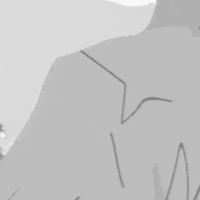
(Marcello Gennari/Unsplash)
If you’ve read my work over any period of time, I’m sure you’ve noticed that I try to keep a rough structure to how I work—both in terms of timing and what I produce.
If you read a Tedium post on Neapolitan ice cream or instant mashed potatoes, they’re both roughly between the 2,000 and 3,000 word marks, despite being written about four years apart.
I think that for writers that put out a lot of words like myself, structure is often the way to get them to maximize their efforts, so they’re not just kind of doing it without any rhyme or reason.
I know, for example, that twice a week I’ll be putting out a longer newsletter issue—either writing it by myself (which is most of them), working with a contributor (2-3 each month), or doing a refresh/update to the archive (once a month or less). Conceivably, I could just send Tedium issues whenever I wanted, but I don’t do that, because then my schedule would look chaotic.
Likewise, with MidRange, I have a set structure—I either write the pieces the Sunday before or the day of. This is actually much more flexible format-wise, because I can technically do it whenever. But the reason I’m able to do that comes down to the fact that the structure is built into the time limit. I will admit that I had dreams of writing a bunch of 15-minute posts, but realistically, I find that you can’t wrap your head around an entire issue without giving yourself 30 minutes to discuss it.

(Kevin Ku/Unsplash)
The secret to creativity, at least for me, is having some sort of lingering deadline hanging over my shoulder that I know I need to hit. I can hit that creative idea powerfully if I know that I don’t have too much time to overthink it.
I think that when I struggle with a creative project, it’s because there’s been a loss of that structure, and as a result I find myself having to do things without a hard deadline.
Other people may thrive on the open canvas; I find it stifling. And I think that with creative projects that I struggle with, what I might need to do to make those projects work is to find ways to invent more deadlines and structure around them, so I’m not feeling lost in an open-ended mindset.
Back in 2015, Fast Company asked a bunch of creative people how they manage deadlines—including Roman Mars, the creator of 99% Invisible, a design-focused podcast Tedium is often compared to. (Never heard it before the comparison was made, I swear.)
Perhaps the reason the comparison gets made, beyond a content level, is because we have a similar approach to deadlines. Here’s what Mars told the magazine:
If you have a deadline it means you probably have another deadline behind it. You should do your best, but everything doesn’t have to be precious and perfect, you can get it next time. I like having a weekly show for that reason. Knowing that each episode doesn’t have to be the definitive episode of 99pi is the key to me getting it out in the world. The struggle is in doing the best you can every week, not sweating over every single thing and expending all your energy until you collapse.
I’m with Mars—the part that often makes creativity challenging for me is that dipping in with an exploratory mindset often means that I end up floating and tweaking, rather than trying to do something, start to finish. Perfection is dangerous—completion matters.
And not having the luxury of time means you can lift higher than you might have ever thought.
Recently, the popular YouTube channel Linus Tech Tips did a behind-the-scenes episode where it talked about the challenges of managing its blistering video schedule at scale, and how process challenges often got in the way of things sometimes. (Suitably, the video was something of a backdoor ad for Monday.com.)
It highlighted a reality for the channel: Basically, none of this would be possible if Linus Sebastian had to manage the cameras himself and do all the editing and writing. So instead, teams help manage everything around a tight deadline, and despite the challenges of actually creating nearly 20 videos a week across numerous channels, they pull it off. And the videos they create, despite these challenges of tight deadlines and brutal scheduling, are full of life and ideas.
Structure scales up. The tension strengthens the end result.
Time limit given ⏲: 30 minutes
Time left on clock ⏲: 3 minutes, 7 seconds



